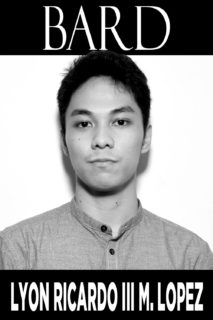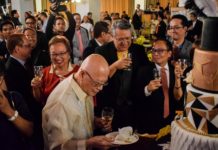RECENTLY a letter by National Artist for Literature F. Sionil Jose to Ramon del Rosario Jr., chairman of the National Museum, made the rounds in social media when he asked del Rosario to withdraw the permanent display of the works of 20th century Filipino impressionist painters and writers Emilio Aguilar Cruz and Andres Cristobal Cruz.
The letter drew negative remarks from netizens who seemed to have been offended by the writer’s sharp tongue, as Jose called both artists as “non-entities,” either as painters or writers. He also remarked that such works did not deserve to be displayed at the National Museum, the country’s “repository of our cultural heritage.”
Though his remark may be bold, it is definitely not an unintelligent one. On the contrary, it is his critical view on the subject of what should and should not be in our National Museum that must be understood.
It must first be established that Jose’s letter was private and confidential, and as he clarified in a second letter addressed to his critics, it was posted without his prior knowledge or consent. It might also be interesting to note that the person who posted the letter was Therese Cruz, the daughter of the painter.
And while the reaction is understandable (in the letter she attacks his grammar rather than the content of the letter), one can only speculate as to how she got hold of the private letter.
The fact is that this was not addressed to the Cruzes but to the administration of the National Museum, and so the leaking of the letter puts into question the integrity of the one who posted it; in this case, the artist’s daughter. The posting of this letter was not to call out Jose’s harsh judgment but to discredit him.
So how did Cruz’s paintings get there, anyway?
The whole Gallery XV, located on the third floor of the National Museum of Fine Arts, is dedicated to Cruz. Inaugurated in 2015, the exhibit was made to celebrate the centenary birth anniversary of the painter and his life’s works. Included in the exhibit is a detailed write-up of Cruz’s life.
Cruz’s family donated some 50 of his portraits, sketches and landscapes, largely of oil paint and watercolour, along with their personal collection of works by other prominent painters.
To my inexperienced eye, Cruz’s works seem rather monotonous – lackluster, not meeting up to the claim of “standard bearer of Philippine impressionism,” as is written in the exhibit notes. Save for some sketches and a portrait on Vicente Manansala, his lifetime worth of works does not seem to tackle any event or contain any hint of historical or cultural significance.
If anything, Sionil Jose raised quite a few significant questions, at least in my mind: How does one’s work get into the National Museum? What criteria must a piece of work meet in order to merit a place in a permanent display of an entire people’s museum?
Could we not possibly be railroading a person to the level of National Artist without first knowing what exactly it was that he stood for?
The highway to fame (not to mention, infamy) is not foreign to Filipinos, apparently, as in the case of several possible senatorial candidates in next year’s midterm polls such as Bong Go, Ronald “Bato” de la Rosa and Mocha Uson, a known purveyor of fake news and still surprisingly, an assistant secretary at the Presidential Communications Operations Office.
A recent film that tackled our predilection for idolizing heroes, “Goyo: Ang Batang Heneral,” questioned that which is already written in history: why was Gregorio “Goyo” del Pilar raised to the image of hero? He was President Emilio Aguinaldo’s hatchet man; a young, dashing and naive playboy who was just starting to find out the meaning of love in a time when the country was trying to find the meaning of nationhood.
In today’s time, often we are scared, nay, offended, when we are questioned. It is about time we question that which is happening around us. Learning to ask the right questions is far more rewarding than having all the answers.
Further, the National Museum, as Jose, a former editor in chief of the Varsitarian, pointed out, is not a private gallery. “There is no room [in the National Museum] for freedom to mount exhibits based on personal choice or influence,” he wrote in his second letter.
The museum is run by the government and essentially, by the people. If what is inside does not feed the sense of history and nationhood of the people, then that would defeat the purpose of having a national museum.
But this is not to say that Cruz’s works are not worth being permanently displayed in private galleries (as they already are). It is that prominent adjective “national in “National Museum” which bugs me. Jose may have been trying to scratch that itch.
Clearly, Jose was just exercising his right as a citizen and a national artist. The 93-year-old knows whom the museum should serve and wasted no time in fighting for it.
If nothing else, the incident only proved his worth as a national artist. In times such as these, it is important to remain skeptical and aim to be critical.















